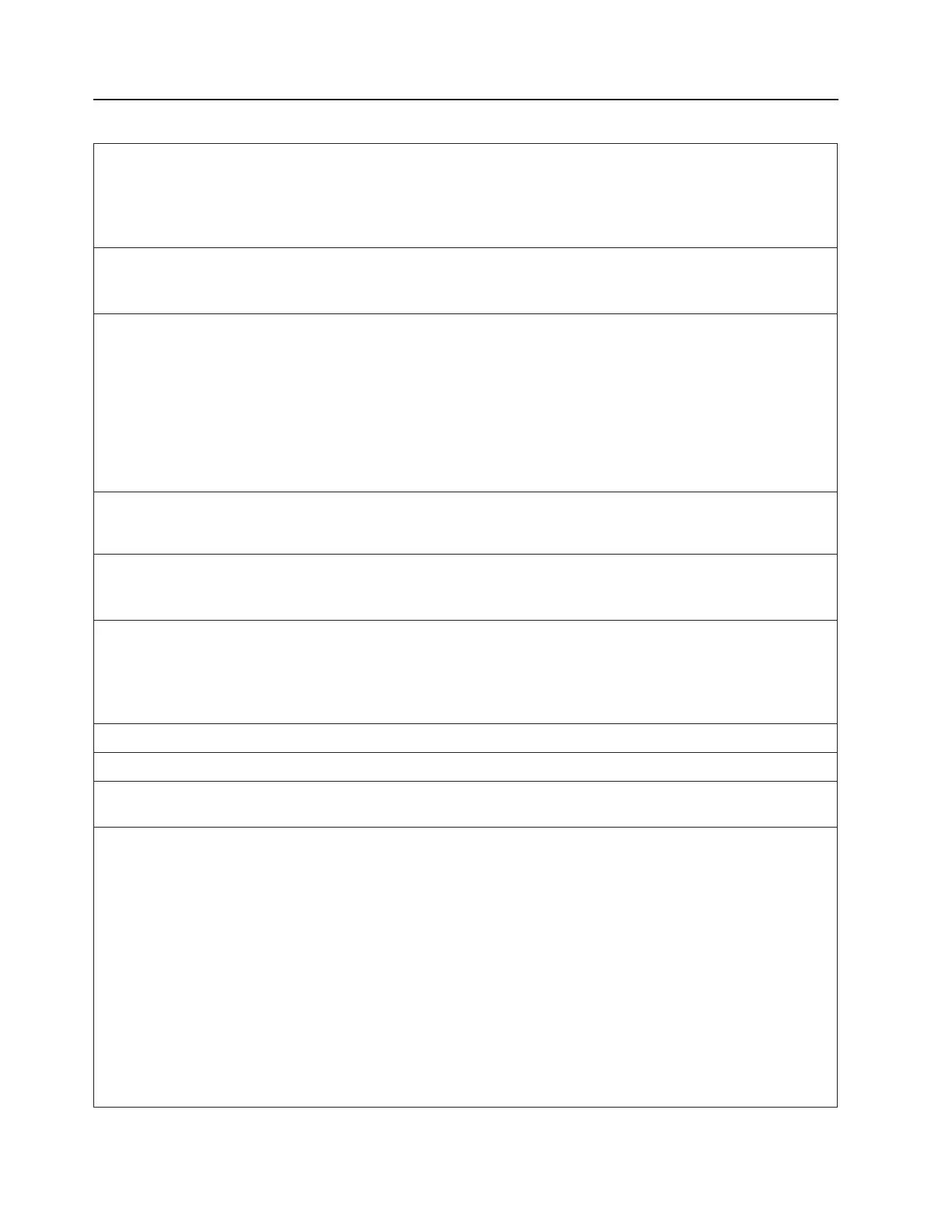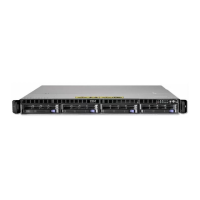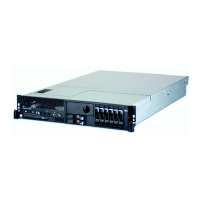2104 Model DL1 Expandable Storage Plus
Dimensions
Height 128 mm 5 in.
(3 EIA units)
Width 445 mm 17.5 in.
Depth 552 mm 21.7 in.
Weight¹
Minimum 21 kg 47 lbs.
Maximum 32 kg 71 lbs.
Electrical (For each drawer)
Power source loading N/A
Power factor not less than 0.97 at 25% maximum load
Voltage range (V ac) 100 to 240
Frequency (hertz) 50 to 60
Thermal output (Maximum)¹ 921 Btu/hr
Power Requirements (Maximum) 270 watts
Inrush current 71 amps
Maximum altitude 2133 m (7000 ft.)
Temperature Requirements² Operating
10 to 40°C
(50 to 104°F)
Non-Operating
10 to 52°C
(50 to 125°F)
Humidity Requirements Operating Non-Operating
(Noncondensing) 8% to 80% 8% to 80%
Wet Bulb 27°C (80°F) 27°C (80°F)
Noise Emissions³ Operating Idle
L
WAd
6.15 bels 6.1 bels
L
pAm
N/A N/A
<L
pA
>
m
N/A N/A
Impulsive or prominent discrete tones N/A N/A
Clearances Front Back Left Right
Install/Air Flow¹ 1140 mm(45 in) 810 mm (32 in) N/A N/A
Service 1140 mm(45 in) 810 mm (32 in) When mounted in
a rack
1. Each 2104 rack-mounted unit requires an air flow of 1.1 cubic meters/minute (40 Cubic feet per minute (CFM)).
When racks containing many 2104 units are to be installed together, the following requirements must be met to
ensure that the 2104 units are adequately cooled:
v The airflow is in at the front of the rack and out at the back. To avoid moving exhaust air to the intake of
another piece of equipment, racks should be positioned in alternate rows, back-to-back and front-to-front.
v The front of racks should be positioned on floor-tile seams, with a full line of perforated tiles immediately in
front of the racks.
v Where racks are in rows front-to-front or back-to-back, there should be a gap of at least 1220 mm (48 in)
separating the rows.
v To ensure proper air flow within each rack, the rack filler plates must be installed in unused positions. Also, all
the gaps in the front of the racks must be sealed, including the gaps between the 2104 units.
2. The recommended operating temperature is 22°C (72°F) or lower. At lower temperatures, the risk of failure in the
unit is reduced. If the operating temperature is above 22°C (72°F) for long periods of time, the unit will be
exposed to a greater risk of failure from external causes.
3. See “Noise Emission Notes” on page 336 for definitions of noise emissions positions.
234 Site and Hardware Planning Information
